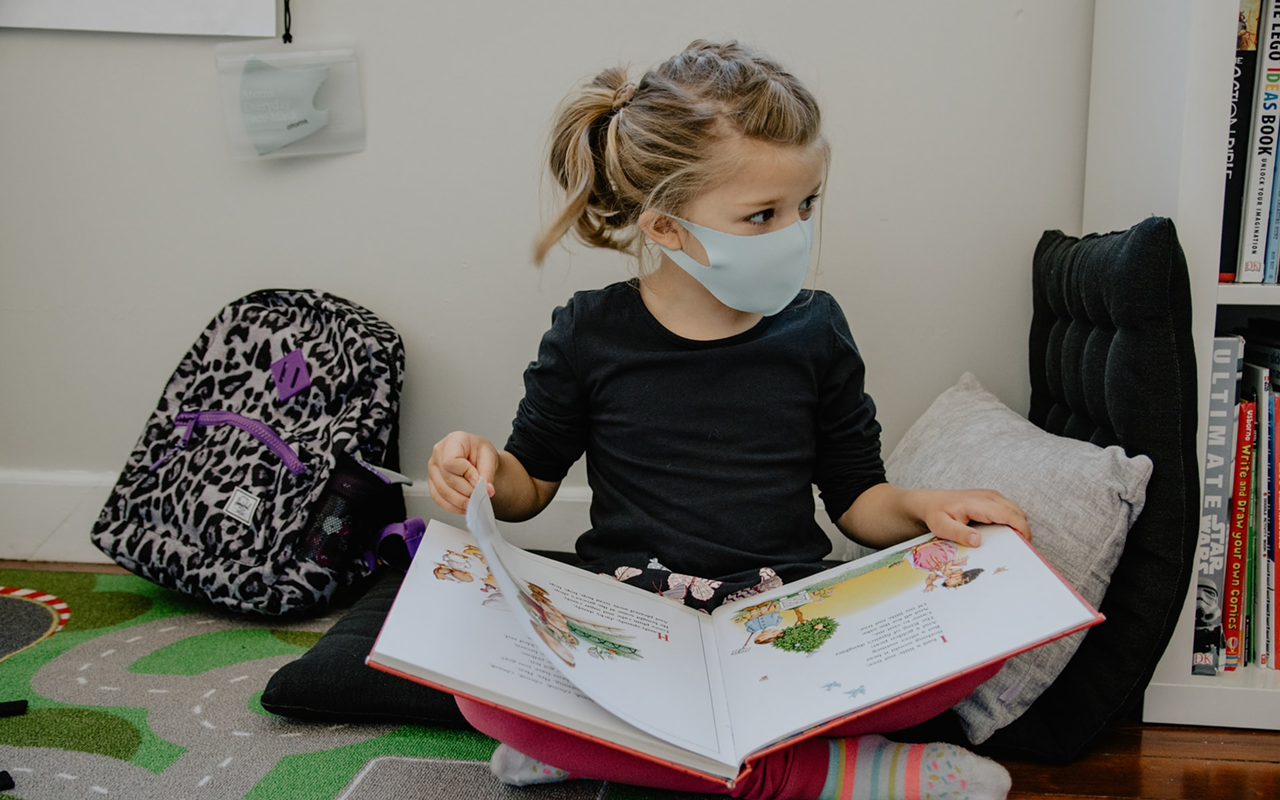
Photo: Fusion Medical Animation, Unsplash
Masking and vaccination can help defend against the coronavirus, scientists say.
The most recent spread of COVID-19 in Hamilton County finally is starting to recede slightly.
For the first time since about mid-July, the Centers for Disease Control and Prevention classifies Cincinnati's home county as being a medium-risk area for picking up or spreading the coronavirus rather than a high-risk one. According to CDC data reviewed Aug. 26, the county has a COVID-19 case rate of 185.57 er 100,000 people. The weekly COVID-19 medical care admission stands at 10.3 people per 100,000, and 5.8% of county hospital beds are occupied by patients confirmed to have the virus [local medical experts at the Health Collaborative say that figure for the multi-county region is closer to 7%, according to Aug. 26 data].
In February, the CDC adjusted the way it classifies community spread, which is now based upon full hospital beds, hospital admissions and the total number of new COVID-19 cases in an area rather than infection rates [many epidemiologists, public health experts and other medical personnel have pushed back against this reclassification].
Hamilton County has seen a significant rise in COVID-19 spread this summer as officials have continued to ease prevention protocols such as requiring masks. The county moved from low risk to medium risk on July 15 and has been high risk since July 22. On Aug. 18, the seven-day average of COVID-19 cases in Hamilton County was 215.91 cases per 100,000 residents, or 1,765 cases total.
In July other Greater Cincinnati counties also were experiencing high levels of community spread, including Butler, Clermont and Warren counties. New CDC data shows that Clermont and Butler counties remain high risk now, while Warren has gone down to medium risk.
Through COVID-19 hospitalizations are slightly decreasing, the Health Collaborative says that more than 95% of staffable medical-surgical and ICU beds are occupied, which keeps the intensity up for healthcare providers and for patients who are scheduling procedures that they'd put off earlier during the pandemic.
Local COVID-19 vaccinations stall
Local vaccinations remain relatively stalled, the Health Collaborative says, with only 66% of the regional population having started – not completed – a vaccine series and just 31% having received a booster.
"Progress is slow across age groups," the Health Collaborative says in its Aug. 26 report.
Scientists have said that getting one of the three COVID-19 vaccination series available in the United States (the two-dose Pfizer or Moderna series or the one-shot Johnson & Johnson vaccine) greatly protects people from severe illness and likely hospitalization should they be exposed to the coronavirus, including its variants like Omicron and Delta. Adding a booster provides even more protection against serious health challenges or death, experts say. And though even vaccinated people can still contract COVID-19, they are much less likely to need hospitalization. Most hospitalized COVID patients are unvaccinated, medical staff say.
COVID-19 vaccinations are available to people ages six months and older. In June, the U.S. Food & Drug Administration granted Pfizer and Moderna vaccine series with emergency use authorization for children as young as six months, including for children who already have had COVID-19. Johnson & Johnson and Novavax vaccines have emergency use authorization for people ages 18 and older. See all FDA authorizations and approvals for COVID-19 vaccines in the United States.
Most people are eligible for at least one booster vaccine, and many scientists say that additional COVID-19 boosters will become necessary as the virus continues to mutate. An updated booster formula likely will be available beginning in September.
Finding COVID testing or vaccination resources
Local health agencies provide lists of where residents can become vaccinated from COVID-19. Hamilton County Public Health and the Cincinnati Health Department both point to free vaccination sites and events.
Most local and regional health agencies, including the Health Collaborative, provide lists of places where residents can be tested for COVID-19 or pick up a testing kit to use at home.
The CDC advises that those testing positive for COVID-19 or who have COVID-19 symptoms should isolate themselves from others, especially from those who are immunocompromised. Avoiding travel for at least five to 10 full days is recommended, depending on symptoms, severity or setting. People ending isolation should continue to wear a mask for five more days, the CDC says.
A tool to help determine how long you need to isolate, quarantine, or take other steps to prevent spreading COVID-19 is available on the CDC's website. However, many doctors and epidemiologists, including experts at Yale University, caution that the CDC's current guidance for isolation may be too short to stop or slow COVID-19 transmission to others.
Stay connected with CityBeat. Subscribe to our newsletters, and follow us on Facebook, Instagram, Twitter, Google News, Apple News and Reddit.
Send CityBeat a news or story tip or submit a calendar event.




